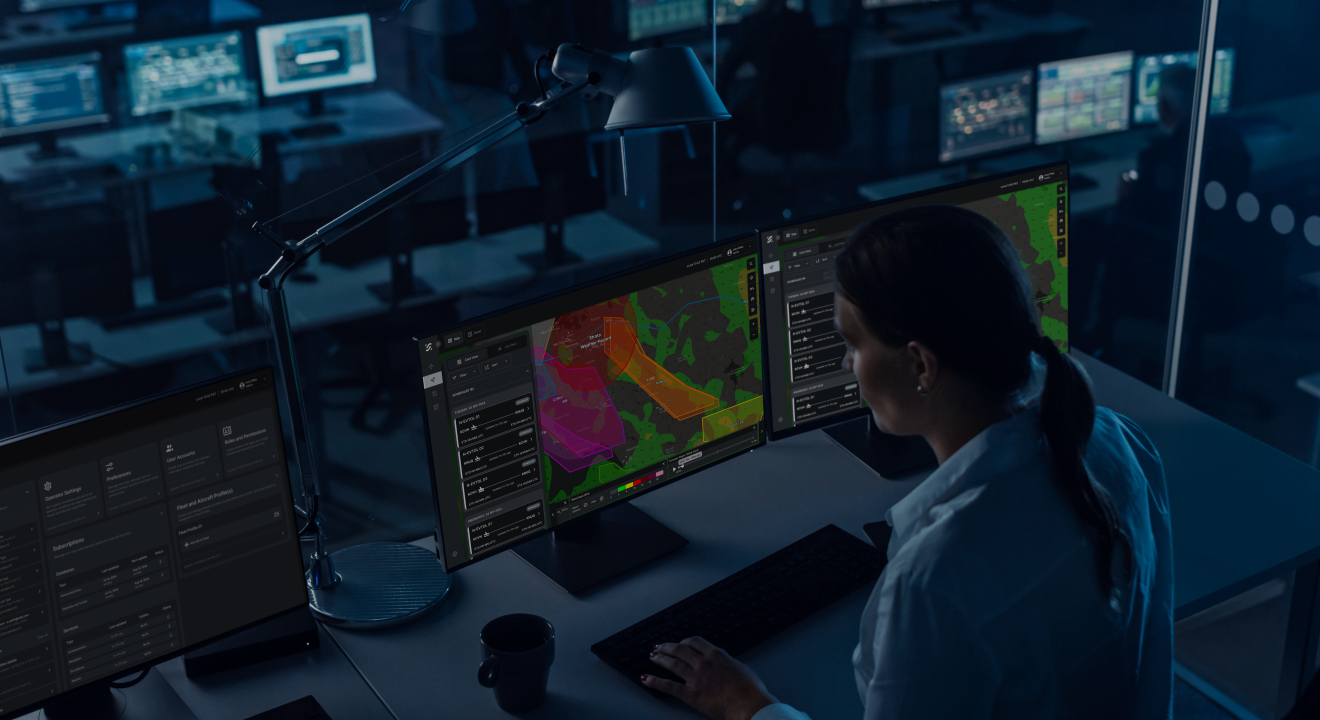In just a few years, Advanced Air Mobility (AAM) will take place in our skies. Third-Party Service Providers (TSPs) will be crucial for making AAM operations more predictable by giving operators a shared common operating picture. AAM operations can be seamlessly managed through SkyGrid’s system and then planned and executed effectively using our high-assurance third-party services.
Our new Concept of Operations (ConOps) for Third-Party Services Supporting the Airspace Integration of AAM breaks down how AAM flight operators will interact with SkyGrid’s system to support crewed VTOL, uncrewed VTOL, and uncrewed CTOL operations. Before the flight, AAM operators will use SkyGrid’s system to assess the operating area, schedule a flight, plan the flight route, verify the feasibility of the flight plan, and prepare for departure using digital information services and strategic planning services. During the flight, operators will monitor the operating environment, respond to hazards and constraints, and respond to traffic flow conditions and encounters using digital information services, tactical planning services, and mission support services. After the flight, operators can analyze flight insights using mission support services.

Pre-Flight
The operations manager will assess the general conditions of their operating area for the intended timeframe of the flight. This assessment will include forecast weather, airspace closures, and data availability from command-and-control (C2) and global navigation satellite systems (GNSS). Initial situational awareness is established by using SkyGrid’s services like Weather Data, Notices to Air Missions (NOTAMs), C2 and GNSS Performance Data, and Resource Status and Capacity Data. Environmental thresholds like maximum wind speed, maximum turbulence severity, minimum visibility, and minimum ceiling will determine the likelihood of the operating area being available for the safe conduction of a flight during the intended timeframe.
If conditions satisfy the general requirements for safe operation, the operations manager will schedule the flight and specify the destination vertiport or airport. SkyGrid’s Demand-Capacity Balancing (DCB) service will create a feasible flight schedule based on available departure and arrival slots and parking stands at the destination. DCB will highlight feasible departure windows based on capacity, schedule, and resource constraints.
SkyGrid’s Advanced Flight Planning service will help the operations manager plan the best flight route. After inputting the flight origin, destination, and schedule, the service will process information on airspace constraints, weather, terrain, obstacles, and aircraft performance to identify and suggest feasible flight routes. When multiple routes are available, the operations manager can select the route that best fits their business needs (e.g. one route may provide the lowest energy consumption, while another has the lowest community noise impact). Under current Instrument Flight Rules (IFR) and Visual Flight Rules (VFR), the route will then be submitted to an air traffic management system or air navigation service provider.
Up until the time of departure, SkyGrid’s system will perform periodic validations of the flight plan to ensure its feasibility. This will happen through the Flight Plan Validation service, which continuously monitors airspace closures and temporary flight restrictions (TFRs), availability of data and surveillance services, hazardous weather, resource capacity, and changes in airspace configuration.
Once the flight is within 30 minutes of its scheduled departure time, SkyGrid’s Pre-Departure Traffic Synchronization service will suggest small adjustments (between 1 and 10 minutes) to improve traffic flow in the air and at vertiports or airports. The system will process both real-time traffic data and scheduled flight data to do so.
In-Flight
During the flight, the remote pilot in command (RPIC) will continuously monitor the operating environment to maintain situational awareness. They will identify new conditions, hazards, and constraints using visual weather data, ground-based traffic surveillance, C2 and GNSS performance data, and conformance monitoring. Through the Flight Tracking service, the RPIC will be able to track the progress of the flight. Hazard and constraint monitoring will support the RPIC’s flight monitoring by issuing service alerts whenever a new condition, hazard, or constraint is identified along the route and may require action. These alerts include conflicting traffic, airspace closures and TFRs, changes in availability of data and surveillance services, hazardous weather, changes in airspace configuration, vertiport or airport closure, and changes in availability of emergency and alternate landing sites.
To respond to new hazards and constraints, the RPIC will utilize SkyGrid’s Dynamic Rerouting service. This service will produce an advisory for a feasible trajectory change to clear the hazard through either tactical deviation— a momentary deviation followed by a return to the original plan— or tactical reroute— a permanent change to the originally planned trajectory. The RPIC will coordinate the execution of the trajectory change with Air Traffic Control.
If an aircraft is flying slower or faster than expected, it may disrupt the traffic flow in the air and at vertiports or airports. To compensate, the flight schedule may need to be adjusted to maintain proper traffic sequencing and spacing. SkyGrid’s Flow Management service will monitor traffic flow conflicts like this along the flight route and identify possible resolutions like speed changes and path stretching.
The RPIC will be able to respond to traffic encounters using the Ground-Based Traffic Surveillance (GBTS) and Ground-Based Detect-and-Avoid (GBDAA) services. With GBTS, they can view and track both cooperative and non-cooperative traffic in their operating environment during the flight. GBDAA will issue alerts and advisory guidance to stay clear of other aircraft violating separation rules and avoid collisions.
Post-Flight
Through the Mission Recording service, AAM operators can download data from the flight processed by SkyGrid’s system, including weather, traffic surveillance, airspace configuration, and flight advisories. These services will allow flight operators to analyze past flights and improve future ones.
Read our Concept of Operations to learn how more about how third-party services enable seamless airspace integration and unlock the potential of autonomous flight.

